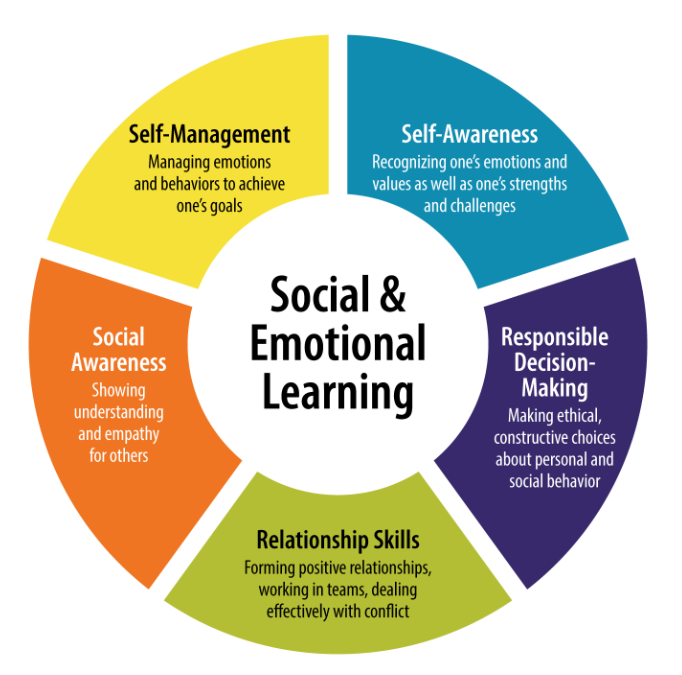My teaching philosophy has a lot to do with supporting students social and emotional development. I believe that a very large chunk of a teacher’s role is to create a positive learning environment by being actively responsive to students behaviour/needs.
Here I am introducing Social and Emotional Learning. I believe using SEL in the classroom is important because, in order for students to do well in the classroom, these key concepts need to be addressed: self-management, self-awareness, social awareness, responsible decision making, and relationship skills.
This video I have attached below is a great resource for introducing SEL and why, as adults, we need to re-evaluate our thoughts to support our social and emotional development.
In this video, Caige starts with a story about Josh. The main takeaway from this story is that instead of asking a child “what’s wrong with you?” when they are upset, we should be asking “what happened to you?”. Doing so will benefit both Josh and the parties involved in his outburst because there is social/emotional learning happening for everyone. Josh will understand his behaviour better, and so will everyone else by understanding his needs.
As a future educator it is important to always consider the behaviours of your students. In my Learners and Learning Environment’s class there are two classroom management approaches listed:
- “behaviourists control behaviour through setting rules and reinforcing through reward and punishment”
- “supporting self-determination so students learn about and are supported to monitor their own emotions and behaviour”
The first approach suggests that students should be punished for misbehaviour and rewarded for expected behaviour. This is an old approach used and is troublesome because it suggests that when students act in a way that is not meeting expectations, there is no help for them to understand their needs. The student will not find out why they are acting out and instead associate these “bad behaviours” with punishment only. In the second approach, students are able to look at their behaviours and understand them more. This way, students may be less likely to repeat misbehaviour and more likely to repeat good behaviour because they are self-aware of their emotions and needs.
As Caige stated in the video, SEL is the process through which children and adults effectively apply the knowledge, attitudes, and skills necessary to understand and manage emotions, set and achieve positive goals, feel and show empathy for others, establish and maintain positive relationships, and make responsible decisions.”
As educators, we need to guide students to think about SEL.

